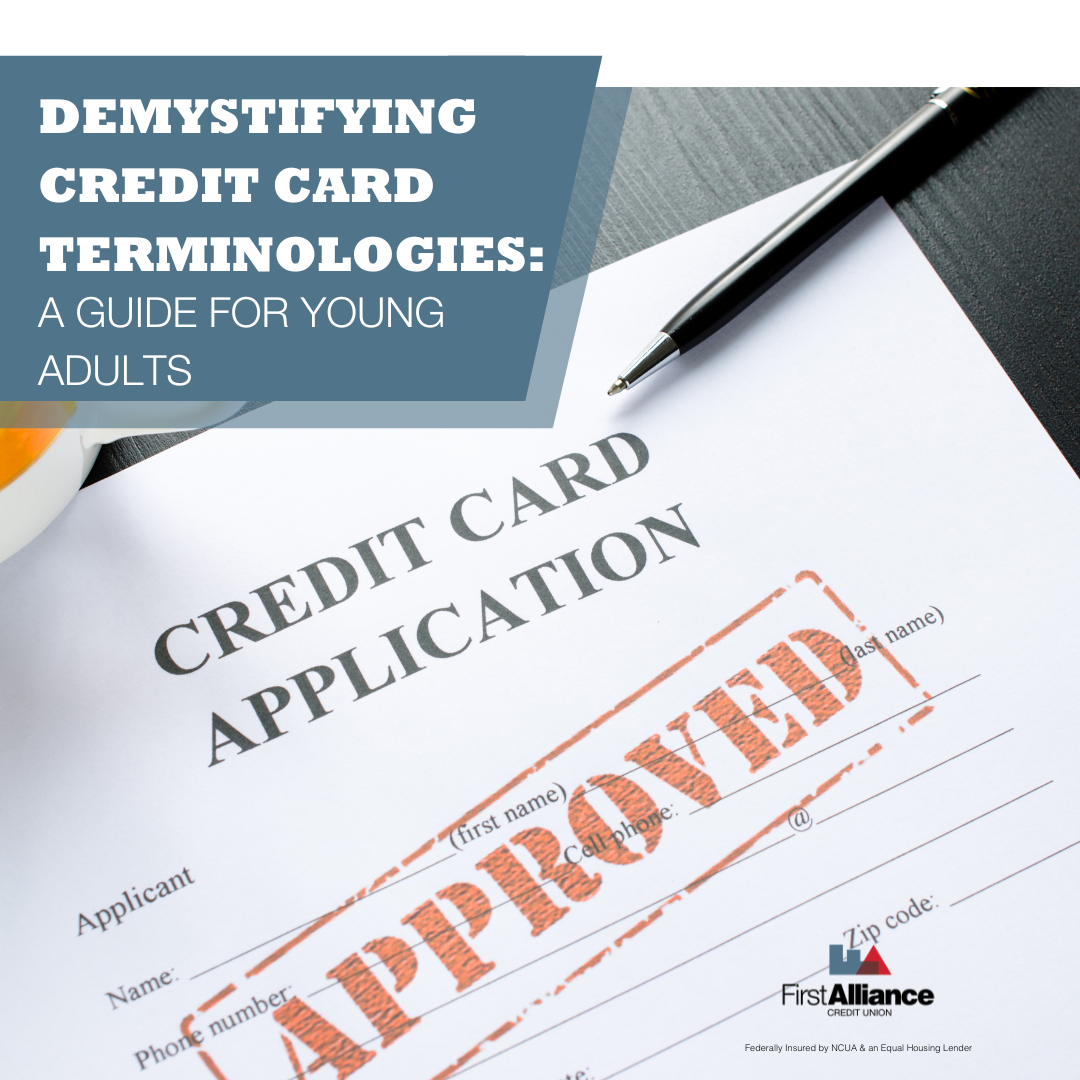Loan Terminology You Should Know
So you’ve decided to get a loan. That’s great news! Are you getting a fixed rate secured loan with a twenty-year term or are you leaning more towards...
5 min read
 Kamel LoveJoy
:
Jun 20, 2024 5:30:00 AM
Kamel LoveJoy
:
Jun 20, 2024 5:30:00 AM

Credit cards can seem pretty daunting with all the terms and conditions they come with. Whether you're fresh out of high school, navigating your early career, or trying to manage your finances while living with roommates or at home, understanding credit card terminologies is essential. Let's break down some of the most common terms you'll encounter with credit cards to help you make informed decisions and use your credit card responsibly.
At its core, a credit card is a type of loan. When you use a credit card, you're essentially borrowing money from a financial institution to make purchases. You then need to pay back that money, either all at once or over time, with interest if you don't pay the full amount each month. This makes credit cards both powerful tools and potential pitfalls if not used wisely.
Credit card interest or APR is the cost of borrowing money from a credit card business. This yearly rate is calculated daily and monthly.
One of the first terms you'll encounter is APR, which stands for Annual Percentage Rate. This is the interest rate you'll pay if you carry a balance on your credit card from month to month. For instance, if you have a credit card with an APR of 20%, and you don’t pay off your full balance, you’ll be charged interest on the remaining amount.
To calculate the monthly interest, divide the APR by 12 months. So, a 20% APR divided by 12 is about 1.67% per month. If you have a $1,000 balance, you'll be paying approximately $16.70 in interest that month if you don't pay off any of that balance. Over time, these interest charges can add up, making it crucial to understand and manage your APR.
Daily Periodic Interest rates (DPRs) are charged on credit balances everyday. Divide the cards APR by 360 or 365 depending on the issuer.
Credit limits are the most a lender will allow a customer to spend on a credit card or line of credit. The card issuer determines the limit based on several factors:
Credit history and score
Percentage debt/income
Other credit card limits
Payment affordability by the client
Your credit limit is the maximum amount you can borrow on your credit card. For example, if your credit card has a $3,000 limit, you can't charge more than that amount. If you try to spend more, your card might be declined, or you could be hit with over-the-limit fees. It's important to know your credit limit to avoid these fees and manage your spending effectively.
The minimum payment is the smallest amount you have to pay each month to keep your account in good standing. This is usually around 1-3% of your total balance or a fixed amount like $25, whichever is greater.
For example, if you have a $1,000 balance, your minimum payment might be around $25-30. Paying only the minimum isn't ideal because it keeps you from getting hit with late fees and keeps your account in good standing, but you'll end up paying a lot in interest over time. It's best to pay off as much of your balance as you can each month.
A grace period is the time between the end of your billing cycle and the date your payment is due. If you pay your full balance within this period, you won’t be charged interest on new purchases.
For example, if your billing cycle ends on the 15th of the month and your payment is due on the 10th of the next month, you have about 25 days to pay off your balance interest-free. Understanding your grace period can help you avoid interest charges and manage your finances more effectively.
Some credit cards charge an annual fee just for having the card. This fee can range from $25 to several hundred dollars depending on the card and its benefits. For example, a basic credit card might have no annual fee, while a card with lots of perks like travel rewards might have a $95 annual fee. It's essential to weigh these fees against the benefits to determine if a card is right for you.
Secured credit cards require a cash deposit that acts as your credit limit. For example, if you deposit $300, your credit limit is $300. This is great for building or rebuilding credit because it shows lenders you can manage credit responsibly.
An unsecured credit card doesn’t require a deposit and offers a credit limit based on your creditworthiness. Understanding the difference between these two types of cards can help you choose the right one for your financial situation.
Your credit score is a number that represents your creditworthiness, based on your credit history. It ranges from 300 to 850, with higher scores indicating better credit. Credit card companies use your credit score to determine your credit limit, APR, and whether you qualify for a card. For example, a score above 700 might get you better terms and a higher credit limit.
Credit utilization is the percentage of your credit limit that you’re using at any given time. It’s calculated by dividing your total balance by your total credit limit. For example, if you have a $1,000 balance and a $5,000 credit limit, your credit utilization is 20%. Keeping your credit utilization below 30% is generally recommended to maintain a good credit score.

Many credit cards offer rewards such as cash back or points. With cash back, you earn a percentage of your purchases back as cash. For example, a card might offer 1.5% cash back on all purchases, so if you spend $100, you get $1.50 back. Points are similar, but you earn points that can be redeemed for travel, gift cards, or other rewards. For example, you might earn 1 point per dollar spent, and 10,000 points might get you a $100 gift card.
A balance transfer is when you move debt from one credit card to another, usually to take advantage of a lower interest rate. For instance, if you have a $2,000 balance on a card with a 20% APR, you might transfer it to a card with a 0% introductory APR for 12 months. This can save you a lot of interest, but watch out for balance transfer fees, which are typically 3-5% of the amount transferred.
A cash advance is when you use your credit card to withdraw cash, either from an ATM or a bank or credit union. It's usually a very expensive way to get cash because cash advances often come with high fees and higher APRs than regular purchases. For example, you might pay a 5% fee on the amount you withdraw, and the interest could start accruing immediately at an APR of 25% or more. It's best to avoid cash advances if possible.
Credit cards are tools that can be very helpful if used responsibly, but they can also lead to debt if not managed well. Always read the fine print, understand the terms, and try to pay your balance in full each month. And if you ever feel overwhelmed, don’t hesitate to seek advice or help by contacting a First Alliance Credit Union financial advisor. Remember, the key to making good money moves is staying informed and proactive about your financial health.

So you’ve decided to get a loan. That’s great news! Are you getting a fixed rate secured loan with a twenty-year term or are you leaning more towards...

Navigating the world of home loans and lines of credit can feel overwhelming, especially when you're just starting out. That's why understanding key...

Credit cards are a big responsibility, but using them effectively is a huge step toward financial stability. If you're thinking about getting a...